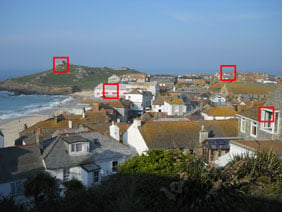Nikon COOLPIX L24
-
-
Written by Gordon Laing
Quality
Nikon COOLPIX L24 vs Canon PowerShot A1200 vs Canon PowerShot A800 Real-life resolution
Nikon COOLPIX L24 results : Real-life resolution / High ISO Noise
Nikon COOLPIX L24 |
Canon PowerShot A1200 |
Canon PowerShot A800 | ||
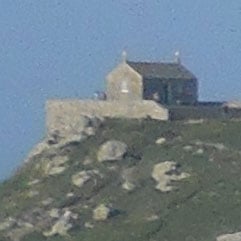 |  |  | ||
f5.5, 80 ISO |
f3.5, 80 ISO |
f9, 80 ISO | ||
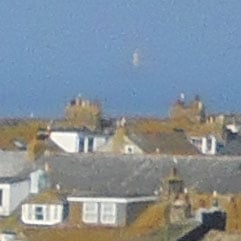 | 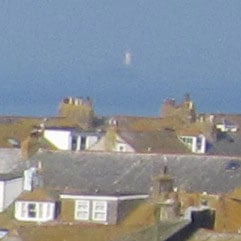 | 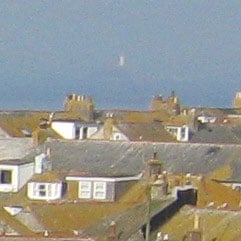 | ||
f5.5, 80 ISO |
f3.5, 80 ISO |
f9, 80 ISO | ||
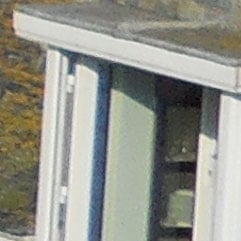 | 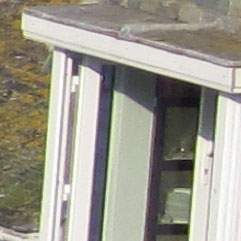 | 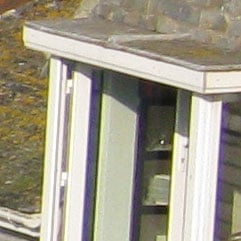 | ||
f5.5, 80 ISO |
f3.5, 80 ISO |
f9, 80 ISO | ||
 | 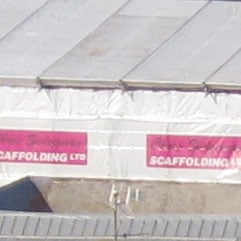 | 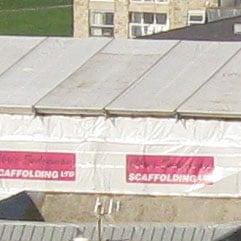 | ||
f5.5, 80 ISO |
f3.5, 80 ISO |
f9, 80 ISO |
Nikon COOLPIX L24 results : Real-life resolution / High ISO Noise
The Nikon COOLPIX doesn’t allow manual setting of the ISO sensistivity but, in the bright sunny conditions it automatically selected 80 ISO. The ISO sensitivity on the two PowerShot compacts was set to the lowest available setting – 80 ISO on the PowerShot A1200 and 100 ISO on the PowerShot A800. The above image was taken with the Nikon COOLPIX L24. The lens was set ot its maximum wide angle focal length of 6.7mm (37mm equivalent). The metering selected an exposure of 1/400 at f5.5 with the sensitivity at 80 ISO. The original 4320×3240 pixel image had a file size of 5.86MB. The crops are taken from the areas marked with red rectangles and are presented here at 100%. Let’s start with the positives: the Nikon COOLPIX L24’s auto metering has got the exposure spot on and selected an aperture and shutter speed combination that’s optimised to get the best from this scene. It’s a bright, sunny day allowing a slightly stopped-down aperture while maintaining a fast shutter speed of 1/400. Ordinarily, stopping down slightly would produce the best results from the lens, reducing the chance of Chromatic and other aberrations, however, the manual suggests the L24 uses a neutral density filter, rather than a physical aperture, so this is unlikely to be the case. Even so, the image is nicely exposed with good detail throughout the tonal range and the colours are bright and saturated. The first 100 percent crop elicited a sharp intake of breath, though. The degree of noise, if not breathtaking, is certainly enough to make you ponder the wisdom of cramming more and more photosites onto small comapct image sensors. In fact if you cast your eye along the top row of crops you see an illuminating example of what happens as the pixel count on an image sensor increases with, left to right, 14, 12 and 10 Megapixel sensors showing progressively less noise and more detail as larger, less densely packed photosites are able to deliver more signal and less noise. It’s a similar story on all the COOLPIX L24 crops, with noise clearly visible and obscuring image detail more or less uniformly. There’s also slight spotting and clumping of pixels in some areas, it’s particularly noticeable in the sky on the first two crops. This is probably the result of processing to try and reduce the noise; it looks a little like JPEG compression artefacts, but that seems unikely given that these are taken with the mildest compression setting. Compared with the crops from the PowerShot A1200 and PowerShot A800 the Nikon COOLPIX L24 crops are clearly the noisiest and least detailed of the three. It you make a comparison across the table between any set of crops it looks about the same. The PowerShot A1200 and even the A800 are not, by any means, noise-free, there’s just less of it, a lot less in the case of the PowerShot A800 crops which look sharp, crisp and beautifully detailed by comparison with the COOLPIX L24. We often say it, but it’s worth pointing out at reduced magnification on most prints or even screens you’d be hard pressed to see these problems. At 25 percent magnification side by shots from the COOLPIX L24 and PowerShot A800 look very similar. If you make a large print from the COOLPIX L24 or view it on-screen at 100% though, you will see that noise, which to some extent defeats the object of having a larger sensor in the first place. Now let’s see how they compare at higher sensitivities in our High ISO Noise results. | |||||||
Nikon COOLPIX L24 vs Canon PowerShot A1200 vs Canon PowerShot A800 High ISO Noise
Nikon COOLPIX L24 results : Real-life resolution / High ISO Noise
Nikon COOLPIX L24 results : Real-life resolution / High ISO Noise
| |||
| |||
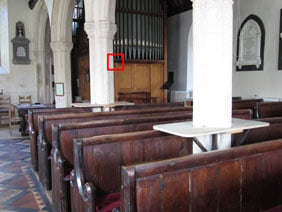 | To compare noise levels under real-life conditions we shot this scene with the Nikon COOLPIX L24, the Canon PowerShot A1200 and the Canon PowerShot A800 within a few moments of each other using their best quality JPEG settings, and at each of their ISO sensitivity settings. |
The PowerShot A1200 and PowerShot A800 were set to Program mode and – in the absence of a Program option – the COOLPIX L24 was set to Auto. The lenses were set to approximate the same field of view and ISO was manually set on the PowerShot A1200 and the PowerShot A800. ISO sensitivity can’t be set manually on the Nikon COOLPIX L24, but a series of shots taken in auto mode yielded results at ISO settings of 80 and 400 which we’ve shown here for comparison purposes.
Despite the fact that the ISO can’t be set manually on the Nikon COOLPIX L24 we’ve included these crop comparisons for two reasons. Firstly, despite the fact we were only able to produce results at two ISO sensitivity settings – 80 and 400 ISO, we think the comparison with the Canon PowerShots at those ISO settings is nonetheless worth making.
The COOLPIX L24 80 ISO crop shows reasonably good image detail, though it’s less well exposed than the Canon crops and the colour balance has gone awry. At 400 ISO the white balance has recovered, but the noise and processing artifacts have combined to produce a poor result that could easily be mistaken for a 1600 ISO crop.
Secondly we wanted to make some comments about the COOLPIX L24’s approach to auto ISO sensitivity settings which affects its ability to produce good results in low light conditions without using the flash. In addition to the real-life resolution and high ISO test shots we took lots of other shots with COOLPIX L24 in a variety of conditions some of which appear in our Nikon COOLPIX L24 gallery. Some of these shots were taken in low light conditions and at night, most, though not all were shot in Auto mode, but only on one occasion did the COOLPIX L24 select an ISO sensitivity above 400 ISO. Even then the resulting shutter speed was 1/8th of a second – too slow to avoid camera shake.
Despite its published upper sensitiy limit of 1600 ISO, the COOLPIX L24 rarely operates above 400 ISO. Combined with the lack of optical image stabilisation and the relative ineffectiveness of Electronic Vibration Reduction and Motion Detection this rules the L24 out for hand-held low light use without the flash – the shutter speeds it selects in these circumstance are often too slow to avoid camera shake. The failure of Motion Detection to select a high ISO in low light is particularly perplexing. On many occassions when we took low light shots in Auto mode with the flash forced off the Motion Detection icon appeared on screen yet the results showed the camera had selected a sensitivity of 400 ISO or lower resulting in shutter speeds below 1/20th of a second.
Now head over to our Nikon COOLPIX L24 gallery to see some more real-life shots in a variety of conditions.
Nikon COOLPIX L24 |
Canon PowerShot A1200 |
Canon PowerShot A800 | ||
 | 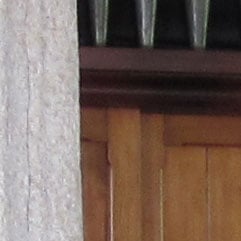 | |||
80 ISO |
80 ISO |
80 ISO Not available | ||
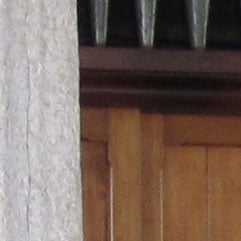 | 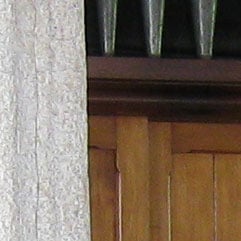 | |||
100 ISO |
100 ISO |
100 ISO | ||
 |  | |||
200 ISO |
200 ISO |
200 ISO | ||
 |  |  | ||
400 ISO |
400 ISO |
400 ISO | ||
 |  | |||
800 ISO |
800 ISO |
800 ISO | ||
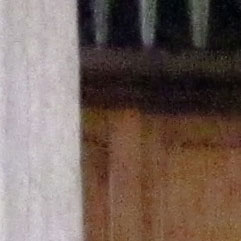 |  | |||
1600 ISO |
1600 ISO |
1600 ISO | ||
 |  | |||
1600 ISO Low light (2M) |
1600 ISO Low light (2M) | |||

